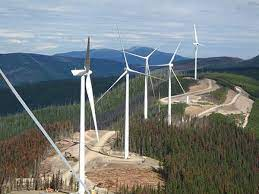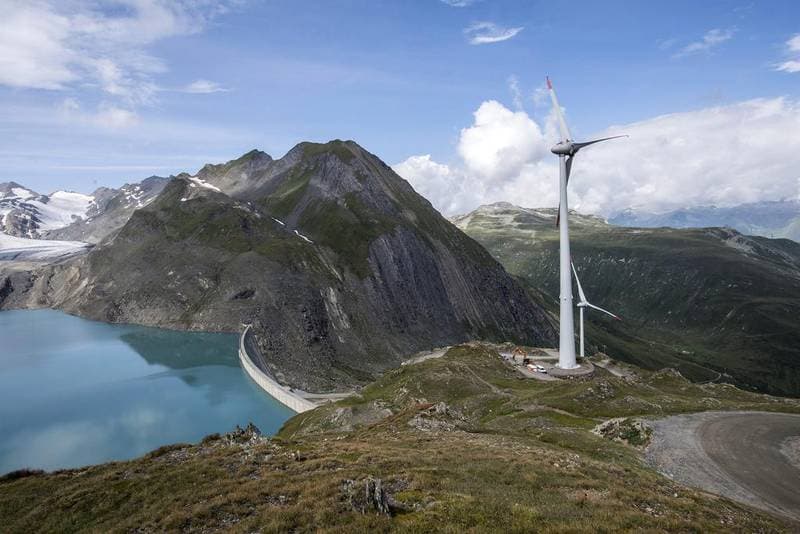Cant believe he hasn’t flown to Pembrokeshire for five years ![]()
I mentioned this in the UK politics thread but the UK has shut down both Hinkley Point B reactors in the last month. The government has not even spoken to the operators about keeping them open. In the meantime it is having discussions about extending the service of coal fire stations.
Whether you are pro nuclear or otherwise, on the surface this feels incredibly odd.
It was a direct reaction to the fact that most people would rather ignore that elephant in the room, hence ![]()
I’m wondering if it’s because the costs to maintain, repair, certify, and run the equipment, especially the safety equipment just makes it unviable? I read that it’s pretty much beyond its lifespan already.
Entirely possible, but from what I’ve read the government haven’t even discussed the option with the operator.
Externally it just feels bizarre. As you say the devil might be in the detail but reports are also saying the plant was viable for another Winter at least.
The decision has put the UK more at the mercy of having to import energy and certainly doesn’t help with short term CO2 targets if the coal fired station stories are correct.
They might know something we don’t.
Such as?
Externally it really looks like they are simply too late in considering it. If that is the case, it’s extraordinarily poor management of the situation.
The history of refurb reactors is fairly woeful. Hydro Ontario destroyed its balance sheet 20 years ago extending the life of some nuclear assets, that then didn’t last as long as planned anyway.
Writ large, the Hinckley story is happening all over the West. Most countries stopped building nuclear a generation ago, and virtually all of those reactors are slated for retirement between now and 2030. The plan all along has been to replace them with some mix of CCGT and intermittent renewables, but most leaning towards the natural gas.
Doesn’t quite work out as well as it could - the power that gets wheeled into Ohio wholesale is at $0.02/kWh, the retail off-peak price is $0.08/kWh.
That said, as Klopptimist notes, you can use one of the cars for that. I have been meaning to work out how many trips to the lake (Quebec, first 1000 kWh per cycle at less than $0.03 kWh) it would take to pay for an electric car compared to a gasoline comparator.
Fixed it for you.
Hinckley B isn’t a referb though. It was generating recently and I believe it only needed an extension on the site license to continue generating for a few more months. An extension that could have bought a buffer in supplies.
Otherwise, yes I agree, the gap being created by the loss of nuclear stations has not been backfilled adequately or appropriately.
Using less would be nice and I’ve been think of ways of doing that but being honest other than switching the odd light off when it gets left on I don’t know what more I can do. I’d love to have solar. I have both roof space and land room for panels but not the available capital even with a government grant. Plus that’s not a short term thing. I obviously can’t make it appear tomorrow. Some people here at work have managed to get into that side and hope to be completely off grid. One chap 100% with both a waterwheel (he bought a mill) and solar capacity.
Additional insulation? Limited options again. Stone walls. Maybe I could put more in the floor slab but that would mean ripping the house to shreds. Roof is insulated already but could look at upgrading that. Again the house would need to be ripped to bits. Again limited capital.
Hinckley B is at end of life, so other than the very short-term, it would require refurbishment. EDF closed it because of the poor (though expected) state of the graphite blocks. Regardless of short-term price considerations, they don’t want to operate it now outside their safety parameters. While EDF is a troubled company financially, operationally they are about the best in the world with nuclear power - so I would hesitate to ignore their technical expertise just because OFGEM has designed an energy market that structurally cannot deal with wholesale price increases.
AP Plus farm in Switzerland
Tumbler Ridge

sites are chosen for consistency and strength of wind, and accessibility.
these sites have to be accessed 365 days a year in case there are any issues with the turbine itself. each unit gets serviced 2x a year so the max an individual tech can manage is about 40-45 turbines. 2-3days per unit each service
I wouldn’t either, and I am talking about a very short term extension. Nothing more. They themselves say they could extend for 6 months.
But that window of opportunity has closed.
Winter is coming.
You are correct that this isn’t solely generating capacity issue, more a market set up one.
The price should have been rising a year ago, sending the signal to moderate and make investments in reducing demand, and/or increased capacity. Instead, an entire sector was allowed to collapse as private capital was forced to subsidize British energy consumers. Now that there are no more investors willing to do so, there is a crisis and the time scale is impossibly compressed.
One way or another, the taxpayer is going to get it in the teeth, just a matter of how the pain is distributed. Given the current government’s track record, I don’t think that is going to look pretty.
Those look beautiful…
100%. Only alternative I can see is to suck it up and see what small changes we can make.
Cabbage soup for Christmas it is.
my cousin in Zurich was the site safety co-ordinator during construction of the Swiss farm, about 6-7 years ago now. when my parents visited him before covid, he took them up to the site. the road up the mountain scared the shit out of my mother.
the Tumbler Ridge farm is quite expansive, my cousin in Dawson Creek has to do a 60-90min commute each way to service those (dependent on season). there’s another farm up there somewhere which has a similar number of turbines he splits his time on. there’s two technicians that go together, they’re not allowed to work solo due to the remote locations and risks involved.
It gets worse
You are both sort of right.
In general, mountains are not ideal for wind farm locations. Quite the opposite, long flat stretches are the best possible approach surface for wind strength and consistency. Hence the fact that offshore wind farms are generally much higher capacity factor sites than on-shore. Similarly, the Great Plains have huge numbers of wind turbines, and in Ontario eastern shores of the Great Lakes are ideal. Mountains produce more chaotic currents, even where the wind is strong.
However, while I don’t know about the Swiss location, I do know about Tumbler Ridge. Tumbler Ridge sits at the end of a funnel created by the Murray River coming out of the Rockies, the wind barely ever shifts, it is almost always from the southwest. The ridge itself works like a platform for the turbines to reach up into the faster moving air higher up. To get a better location, you need to go far to the east, and outside BC.
Would not surprise me if the Swiss site has similar properties, but on the other hand it might just be least-worst in a country with not many flat spaces.

